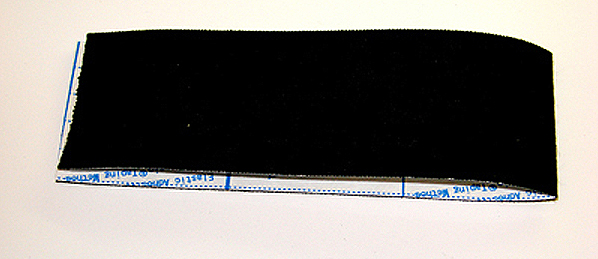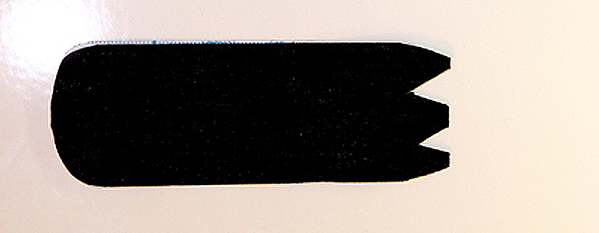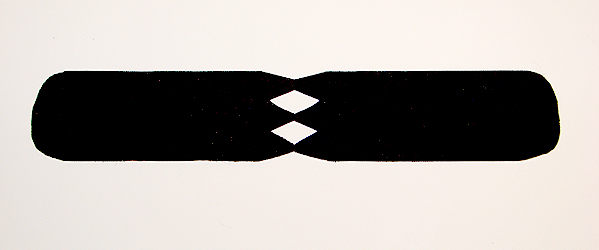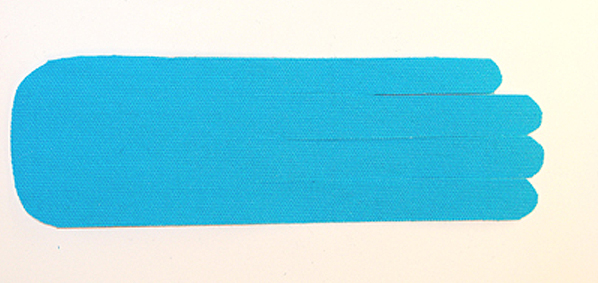PICTORAL FOR KINESIO TAPING A LE HAND
I promised Binney I would try to post a pictoral/tutorial on how I use Kinesio Tape (KT) for my Stage 2 fibrotic LE hand. I want to preface this tutorial with a couple of caveats.
1. Do not attempt to self-apply KT if you have not yet been evaluated by a certified lymphedema therapist as to the appropriateness of KT for your type LE and skin condition.
2. Do not attempt to self-apply KT until you have been professionally taped by a certified lymphedema therapist to determine its effectiveness in your type of LE and you have received proper training and supervision in the application of KT.
I have been self-applying KT for over 2 years now, but I was previously taped and instructed by my CLT therapist for many months in addition to attending KT lectures by Ruth Coopee and have assisted my therapist in KT instructional presentations to other LE therapists. I am not going to go into great depth here on how KT works to reduce LE swelling or all the application details because you can read the excellent article by Ruth Coopee on the Stepup-Speakout website here:
http://www.stepup-speakout.org/kinsiotaping_for_lymphedema.htm
KINESIO TAPING A LE HAND
Supplies Needed:

You will need a roll of KT and a pair of scissors for cutting the tape. Kinesio Tape currently comes in 4 colors - Black, Blue, Pink and Beige. It is available in standard and water resistant. It is also available in 2inch or 3inch widths.
The roll on the far left in the picture above is the original KT packaging that was used up til Spring 2008. New packaging was introduced in early 2008 with the name Kinesio Tex GOLD which has the same adhesive wave pattern as the original KT and is the KT that should be used for LE taping. (see the 3 rolls of KT GOLD in the picture above) If you see KT sold as Kinesio Tex PLATINUM you should avoid using that tape for LE because the straight line wave pattern of the adhesive is not as effective and may cause more skin damage.
In addition to the tape you will need a good pair of scissors. Try to find a pair of teflon coated scissors which will cut the KT without the tape sticking to and gumming up the scissor blades. You can find teflon coated scissors at most craft stores.
The KT has a paper backing which is marked by lines to help you determine the lengths you need to cut. See picture below for an example of the standard paper backing:

The length of each section between the vertical lines is 2 inches. You will learn with practice how many sections of tape you need to cover different body parts.
The picture below shows the classic wave pattern of the adhesive of KT GOLD. Make sure the tape you use has this type of pattern and not the straight line pattern of the Platinum version of KT.

Cutting the Tape:
When I tape my LE hand I cut 2 different shapes in the tape. The first shape is called a "Buttonhole Cut". The purpose of the buttonholes is to have holes you can insert your fingers into and then apply the tape to both the dorsal and palmar sides of your hand.
To make a buttonhole cut I start out by cutting a length of KT about 5 sections long. I then fold the tape in half.

I then use the scissors to round the cut ends of the tape. (Rounded edges are less likely than a square cut edge to pull loose when pulling sleeves and gloves over top the tape) After rounding the cut ends, I cut diagonal cuts in the folded end as shown in the picture below.

When you open out the tape after cutting it should look similar to the picture below.

I generally cut 2 identical buttonhole strips since I prefer to fully cover the dorsum and palmar surfaces of my hand with KT. If you choose to use just one strip of KT on your hand you should insert the 2 side by side fingers that most need reduction of swelling into the buttonholes.
Applying the Kinesio Tape:
I insert my little finger and ring finger into the first strip holes. I work the tape down both fingers until I can apply the body of the tape to my palm and back of my hand. When applying the tape I hyperextend or flex my wrist so that the tape is applied over my stretched hand. Again please refer to Ruth Coopee's instructions on the amount of stretch to apply to the tape and how to leave no stretch on the ends of the tape.
http://www.stepup-speakout.org/kinsiotaping_for_lymphedema.htm
Picture of first strip of tape on the dorsum surface of hand:

Picture of first strip of tape on the palmar surface of hand:

I then apply the second strip of tape to my middle and index fingers in the same manner:

After applying the buttonhole strips I then cut a "Fan Cut" strip which I use to apply to my fingers. I usually cut a length of tape about 3-4 sections long, but this should be adjusted for individual hand length and how much of your fingers you want to cover. I round the corners on one edge of the tape and then I cut the other end of the tape into 4 equal sections about 2 thirds of the way down to the rounded end. I shorten the one section that will cover my little finger and I then round each of the ends of the 4 sections. This is what the fan cut would look like:

I apply the fan cut strip of KT by placing the lower rounded edge near my wrist on top of the KT already applied to the back of my hand. I then slightly stretch each of the cut sections to apply to each of my fingers again with a slight stretch while I flex my fingers. The finished KT application which covers the dorsum, palmar surfaces and all 4 fingers should look something like this:

The KT should never be worn as a substitute for your compression glove and sleeve, but rather is worn underneath your glove and sleeve. The tape can remain in place for 4-5 days before it should be removed. I prefer to use the water resistant KT because it withstands showering and getting wet better than the standard KT.
The next picture shows me wearing the KT underneath a Juzo Dream Sleeve and Gauntlet in navy color. I do not generally wear a gauntlet because I need the full compression of a fingered glove, but I wanted to show the KT underneath the garments.

I have found that KT on my hand along with my compression glove helps to reduce swelling and fibrosis even more than just wearing my glove alone.
Comments
-
Thanks Linda!
I also put it up on the Su-So site.
-
You really did an excellent job with your pictures and instructions! Thanks so much for doing this for us.
-
LindaLou, thank you so much!
That is sooooo helpful. It's hard to visualize what taping involves, but this makes it clear. And wow! You really do some fancy taping! Just for reference, how long does take you to do the whole thing?
Thanks for this!
Be well,
Binney -
As with all things it gets easier with practice. To just tape my hand in the manner described above takes me about 15 minutes. When I do a full taping which includes my forearm, upper arm, shoulder and left side down to the groin I plan on it taking about 45 minutes.
The forearm is easy to do, but the upper arm, shoulder and side require a large mirror to stand in front of so you can see to properly place the tape. The good thing is that once applied the tape stays on for several days.
I generally give my skin a break of a day or two after removing the tape. I also tend to tape as little or as much as I feel is needed at the time. During hot summer months I have more problems with fluid collection under the arm and down my side so I tend to tape more in warmer months.
When I get a chance I may try to add a pictoral for taping the arm which might be of more interest to others. Not everyone has problems with LE in their hand like I do, so certainly they should only be taping the symptomatic areas.
-
Bump
-
Thanks for bumping this up.

I have allergies to adhesives (some band-aids, that clear tape they use over IVs (tegaderm, I think it's called), etc.) especially if I leave some thing on for more than a few minutes. I wonder if the glue is allergy safe?
-
bumping for interest
-
I’ve been looking for this exact thing. Thank you
-
Thanks for bumping thread.
Categories
- All Categories
- 679 Advocacy and Fund-Raising
- 289 Advocacy
- 68 I've Donated to Breastcancer.org in honor of....
- Test
- 322 Walks, Runs and Fundraising Events for Breastcancer.org
- 5.6K Community Connections
- 282 Middle Age 40-60(ish) Years Old With Breast Cancer
- 53 Australians and New Zealanders Affected by Breast Cancer
- 208 Black Women or Men With Breast Cancer
- 684 Canadians Affected by Breast Cancer
- 1.5K Caring for Someone with Breast cancer
- 455 Caring for Someone with Stage IV or Mets
- 260 High Risk of Recurrence or Second Breast Cancer
- 22 International, Non-English Speakers With Breast Cancer
- 16 Latinas/Hispanics With Breast Cancer
- 189 LGBTQA+ With Breast Cancer
- 152 May Their Memory Live On
- 85 Member Matchup & Virtual Support Meetups
- 375 Members by Location
- 291 Older Than 60 Years Old With Breast Cancer
- 177 Singles With Breast Cancer
- 869 Young With Breast Cancer
- 50.4K Connecting With Others Who Have a Similar Diagnosis
- 204 Breast Cancer with Another Diagnosis or Comorbidity
- 4K DCIS (Ductal Carcinoma In Situ)
- 79 DCIS plus HER2-positive Microinvasion
- 529 Genetic Testing
- 2.2K HER2+ (Positive) Breast Cancer
- 1.5K IBC (Inflammatory Breast Cancer)
- 3.4K IDC (Invasive Ductal Carcinoma)
- 1.5K ILC (Invasive Lobular Carcinoma)
- 999 Just Diagnosed With a Recurrence or Metastasis
- 652 LCIS (Lobular Carcinoma In Situ)
- 193 Less Common Types of Breast Cancer
- 252 Male Breast Cancer
- 86 Mixed Type Breast Cancer
- 3.1K Not Diagnosed With a Recurrence or Metastases but Concerned
- 189 Palliative Therapy/Hospice Care
- 488 Second or Third Breast Cancer
- 1.2K Stage I Breast Cancer
- 313 Stage II Breast Cancer
- 3.8K Stage III Breast Cancer
- 2.5K Triple-Negative Breast Cancer
- 13.1K Day-to-Day Matters
- 132 All things COVID-19 or coronavirus
- 87 BCO Free-Cycle: Give or Trade Items Related to Breast Cancer
- 5.9K Clinical Trials, Research News, Podcasts, and Study Results
- 86 Coping with Holidays, Special Days and Anniversaries
- 828 Employment, Insurance, and Other Financial Issues
- 101 Family and Family Planning Matters
- Family Issues for Those Who Have Breast Cancer
- 26 Furry friends
- 1.8K Humor and Games
- 1.6K Mental Health: Because Cancer Doesn't Just Affect Your Breasts
- 706 Recipe Swap for Healthy Living
- 704 Recommend Your Resources
- 171 Sex & Relationship Matters
- 9 The Political Corner
- 874 Working on Your Fitness
- 4.5K Moving On & Finding Inspiration After Breast Cancer
- 394 Bonded by Breast Cancer
- 3.1K Life After Breast Cancer
- 806 Prayers and Spiritual Support
- 285 Who or What Inspires You?
- 28.7K Not Diagnosed But Concerned
- 1K Benign Breast Conditions
- 2.3K High Risk for Breast Cancer
- 18K Not Diagnosed But Worried
- 7.4K Waiting for Test Results
- 603 Site News and Announcements
- 560 Comments, Suggestions, Feature Requests
- 39 Mod Announcements, Breastcancer.org News, Blog Entries, Podcasts
- 4 Survey, Interview and Participant Requests: Need your Help!
- 61.9K Tests, Treatments & Side Effects
- 586 Alternative Medicine
- 255 Bone Health and Bone Loss
- 11.4K Breast Reconstruction
- 7.9K Chemotherapy - Before, During, and After
- 2.7K Complementary and Holistic Medicine and Treatment
- 775 Diagnosed and Waiting for Test Results
- 7.8K Hormonal Therapy - Before, During, and After
- 50 Immunotherapy - Before, During, and After
- 7.4K Just Diagnosed
- 1.4K Living Without Reconstruction After a Mastectomy
- 5.2K Lymphedema
- 3.6K Managing Side Effects of Breast Cancer and Its Treatment
- 591 Pain
- 3.9K Radiation Therapy - Before, During, and After
- 8.4K Surgery - Before, During, and After
- 109 Welcome to Breastcancer.org
- 98 Acknowledging and honoring our Community
- 11 Info & Resources for New Patients & Members From the Team